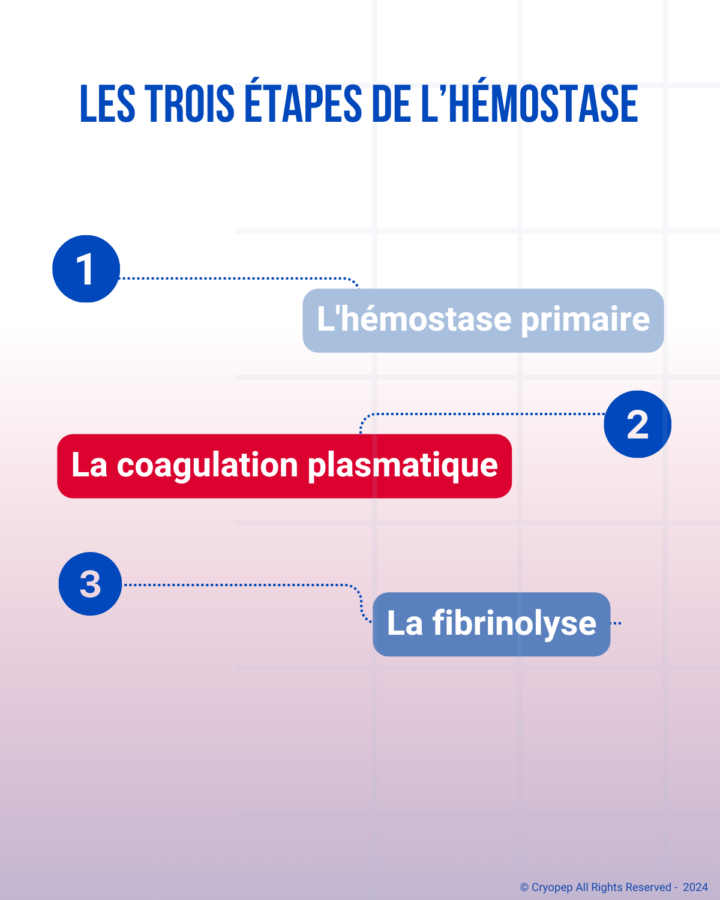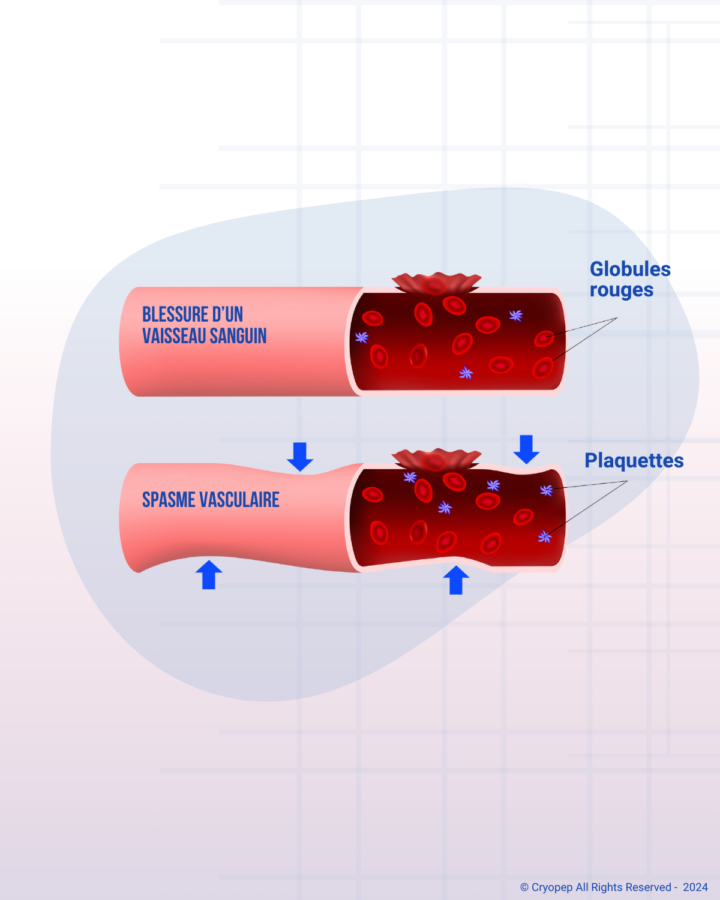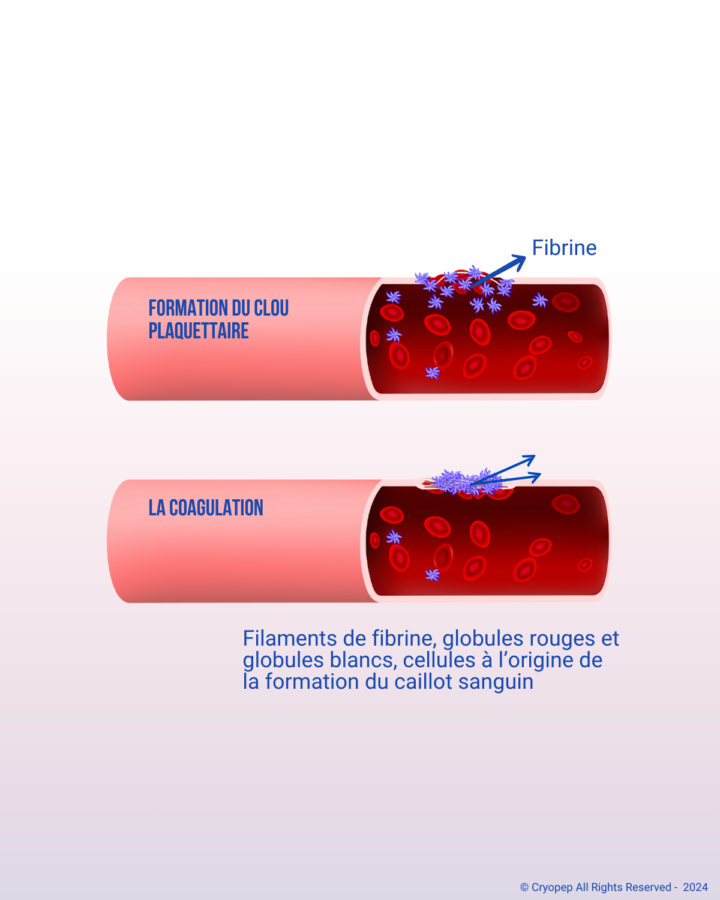
What is hemostasis?
How to explain the hemostasis process?
Hemostasis refers to the physiological responses of the body that contribute to stopping bleeding when a wound occurs, restoring normal blood circulation.
Hemostasis is a process composed of three chronological, interwoven, and interdependent stages that start simultaneously. The aim is to prevent hemorrhages and infections by creating a barrier to prevent foreign bodies from entering the organism.

The three stages of hemostasis
1 – Primary Hemostasis
Primary hemostasis consists of two steps: the vascular phase and the platelet phase
Vascular phase : This mechanism causes vasoconstriction of blood vessels by approximately 40% around the vascular breach, reducing blood flow, minimizing blood loss, and promoting the accumulation of platelets and coagulation factors.
Platelet phase: At the site of the lesion in the vascular breach, proteins become exposed. Platelets will adhere strongly to these proteins. They will activate one another and release the contents of their granules into the bloodstream, promoting their aggregation within minutes. A platelet plug made of activated platelets and fibrinogen is formed, resulting in the creation of the platelet plug, also known as the white thrombus. This temporarily stops the bleeding within minutes until it is reinforced by coagulation.
2 – Coagulation
Simultaneously, enzymatic reactions involving naturally soluble coagulation proteins in the blood are triggered at the vascular breach, leading to the formation of an insoluble protein: fibrin.
Fibrin forms a dense network of filaments, comparable to nets, which strengthens the blood clot by trapping all blood cells and forming a stable plug over time. This is the complex coagulation process, which takes a few minutes.


3 – Fibrinolysis
Once the bleeding is stopped, this process allows for the repair of the damaged blood vessels and dissolves the clot and the fibrin formed to return to a functional state. This will take several days. This is fibrinolysis.
